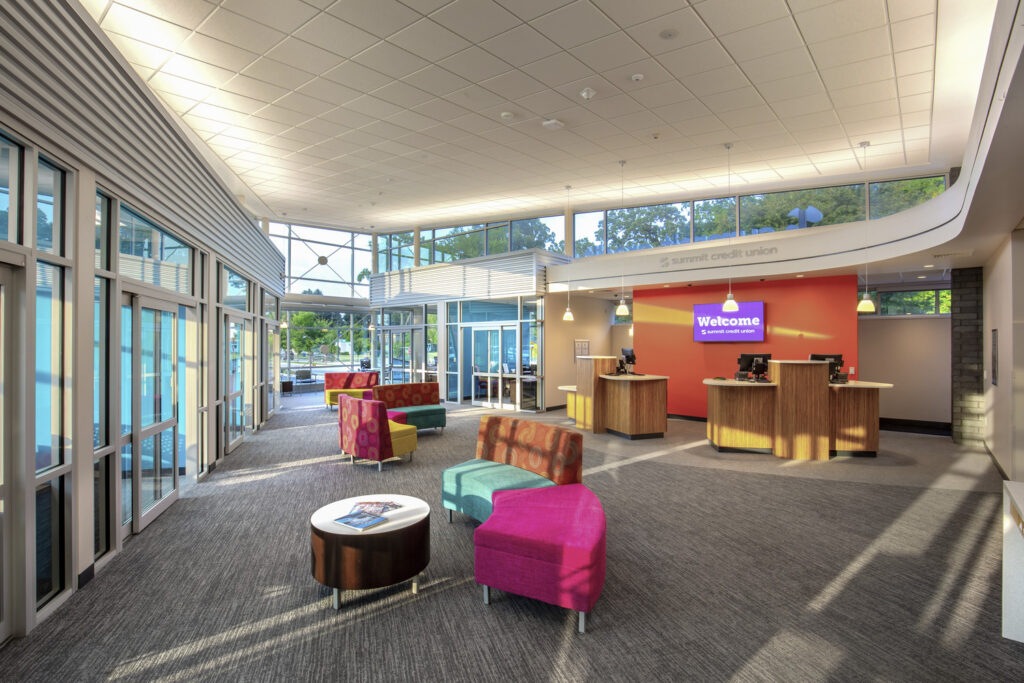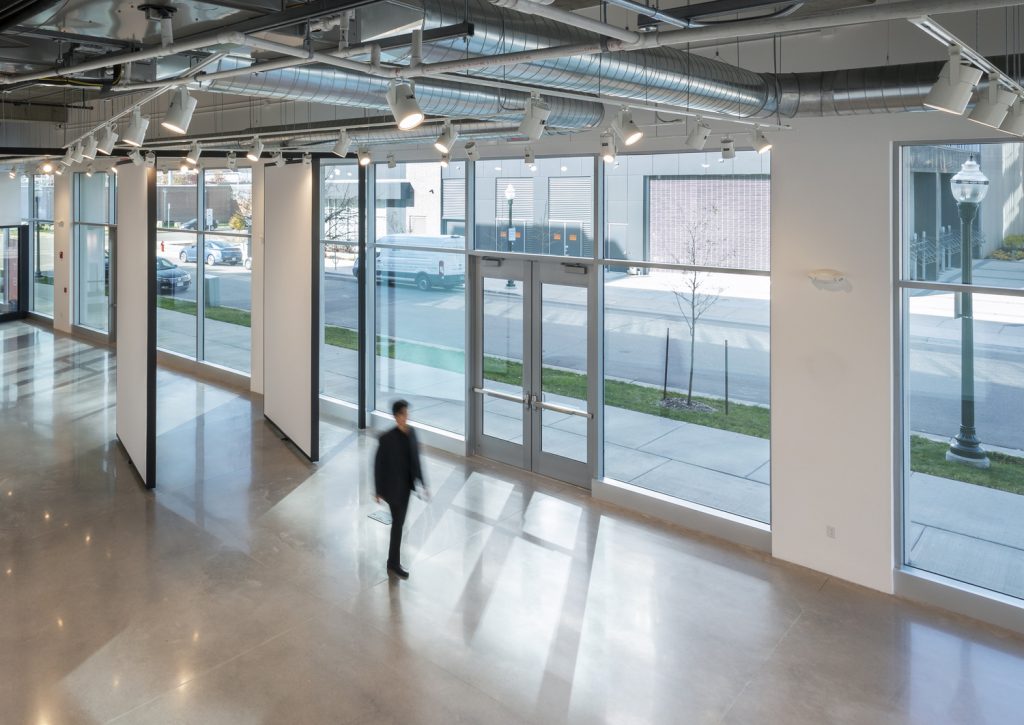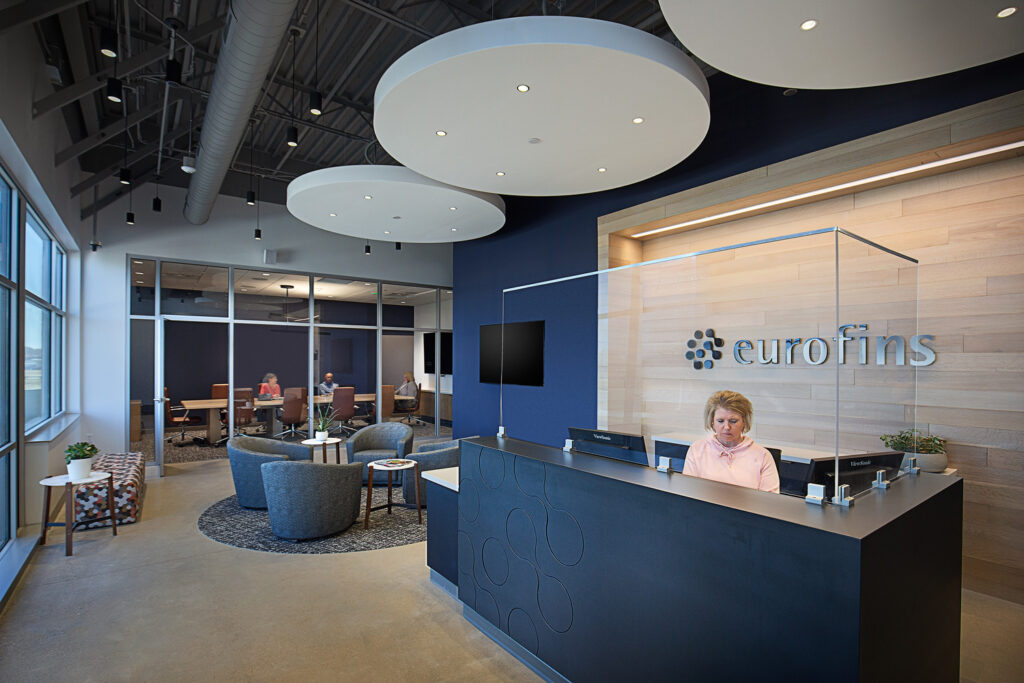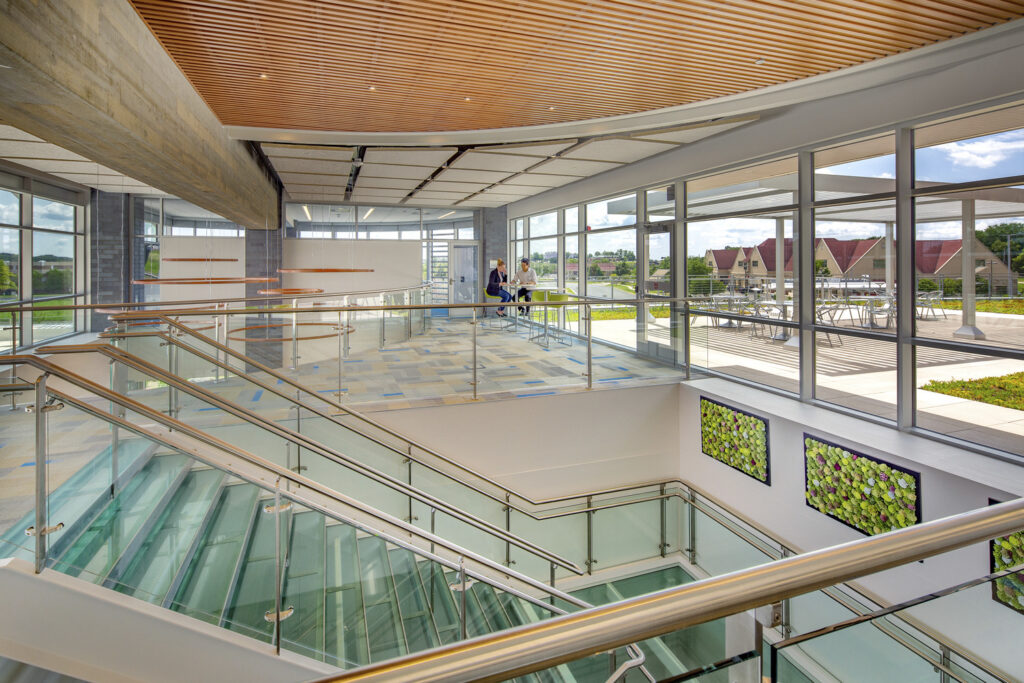Ways to Improve Office Security Design

Prevention is the Best Policy
As engineers, architects, and designers, our role extends far beyond just blueprints. The comfort and safety of the building’s occupants is an essential consideration in design. Great office design will install measures to address potential work hazards and keep staff and data safe from the very beginning of the design process. In other words, prevention is the best policy.
A sense of security is vital and achieving this requires thinking holistically about a building’s concept, adding in rather than adding-on security measures.
Don’t forget to consider 10 years down the road. What are future plans for the space? What will be your security needs? Create a security infrastructure that can be used to support future needs. If you install the cables now, there will be more opportunities for flexibility later.

A Balancing Act
The best office design features are effective, yet subtle. Visible security features such as cameras or motion detectors, may help deter threats and show employees that their company prioritizes safety. Yet, overly obvious security features surrounding an office space can actually make staff feel less at ease.
Designers must design security that walks the line between remaining visible enough to provide deterrence, while unobtrusive enough to avoid disrupting staff workflow and causing unnecessary anxiety. The earlier in the design process that security features are integrated, the more unobtrusive they will be. Oftentimes noticeable security features are made more visible in entry areas like the lobby, then become more discreet as you move further into the building. Employees want an open and welcoming environment, not a prison.
This balancing act means designers must carefully design and place safety features and security requirements integrated and virtually imperceptible.

How To:
So how do we accomplish secure office design? Here are three of the most common ways:


1. Access Control
Security starts at the entry to the building or office. Entrance lobbies can be made more secure by multi-lane turnstiles, keycards, intercoms, or secure revolving door systems. Single points of entry like this are strengthened when you can control who enters the building/space as well as identify them. Again, while control of access points is essential, making these spaces still feel welcoming is also important. These access points should create positive first impressions for staff and visitors.
2. Zoning & Boundaries
The need to keep public and private areas separate is often a key feature in secure office design. Lobbies, entrances, waiting rooms, and other public spaces can be grouped together to limit access and increase visibility. Visitors that require sign-in or clearance to enter more secure areas keep staff-only areas safer. Guests will also be less likely to wander into a restricted area. Defining clear zones and implementing the necessary respective security features helps keep occupants safer and the building more secure.
3. Surveillance
It can sound scary, but the role of surveillance in secure office design can help identify who is coming and going into your building and office. Placing CCTV cameras at secure points can help deter intruders or identify and document evidence. Entrance access points or rooms with sensitive information or expensive items are spots more likely to require extra surveillance.

In order to maintain the balance of function and unobtrusiveness, architects try to limit surveillance devices to where absolutely necessary. It is difficult to hide features like cameras or motion detectors, so less perceptible security measures like secure access points, open sightlines, and public/private zoning, are used as alternatives or additional components.
Want to learn more about Strang’s security services? Check out our webpage here.



